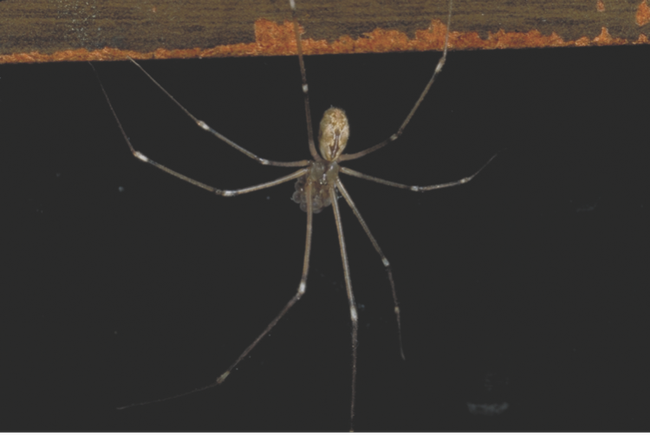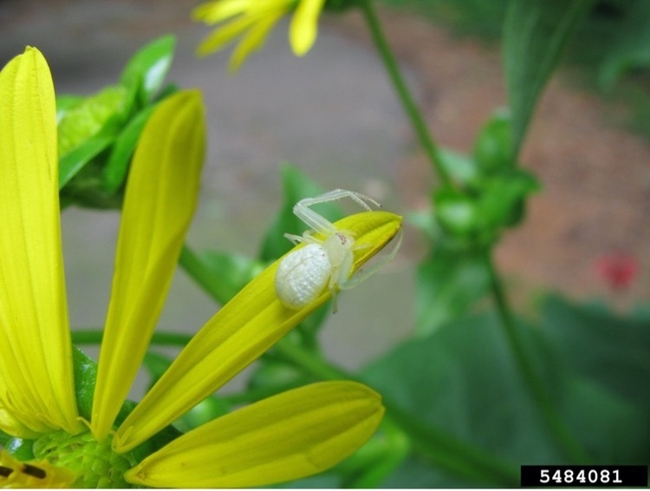While venomous spiders like black widows are well-known, there are many harmless spiders that live in and around our homes and outdoor areas. Spiders are beneficial because they prey on insects and other pests. Most spiders are not likely to bite you and are not dangerous.
Types of Spiders
Spider families vary by body shape, web type, hunting or other behavior, and the arrangement and size of their eyes. There is a wide range of spiders you might encounter in your home or landscape in California.

One of the most recognizable is the cellar spider. Cellar spiders have long, skinny legs and hang upside down in dark corners, often indoors, sometimes bouncing when disturbed.
Another common type of spider is the cobweb spider, which includes widow spiders. Cobweb spiders hang upside down in sticky, irregularly spun webs waiting for prey. Most cobweb species are small and harmless, except for the western black widow. Most black widow bites come from mature adult females which can usually be recognized by a red hourglass on the underside of the abdomen. The adult male is lighter-colored and smaller than the female. Brown widow spiders are becoming more common in California as well.
Wolf spiders have long, hairy legs and are often found running along the ground. They don't build webs to capture prey but can have a silken retreat. Females carry their young on their backs. Wolf spiders are frequently mistaken for the brown recluse spider, which does not occur in California.
Crab spiders have enlarged front legs and look like tiny crabs. They are also known as flower spiders since they are often found on flowers, hunting insect prey. They hunt during the day and don't make webs.
Dwarf spiders are tiny, hunt during the day, and produce sheet-like or irregular crisscross webs on surfaces.

Jumping spiders hunt during the day, stalking and pouncing on prey. They are hairy, sometimes iridescent, and don't spin webs.
Sac spiders hide in silk tubes in places such as corners, beneath plants, or on bark, and stalk prey at night. They occur both indoors and out and are usually pale colored.
Orb weaver or garden spiders, such as the western spotted orb weaver are often large and colorful. They spin elaborate webs in concentric circles in the garden, waiting in their webs or nearby for prey to become entangled.
Many people dislike spiders, but generally they are not harmful and are useful to have around. Unwanted spider in your house? Trap it and take it outside.
Author - Associate Director for Urban & Community IPM/ Area Urban IPM Advisor